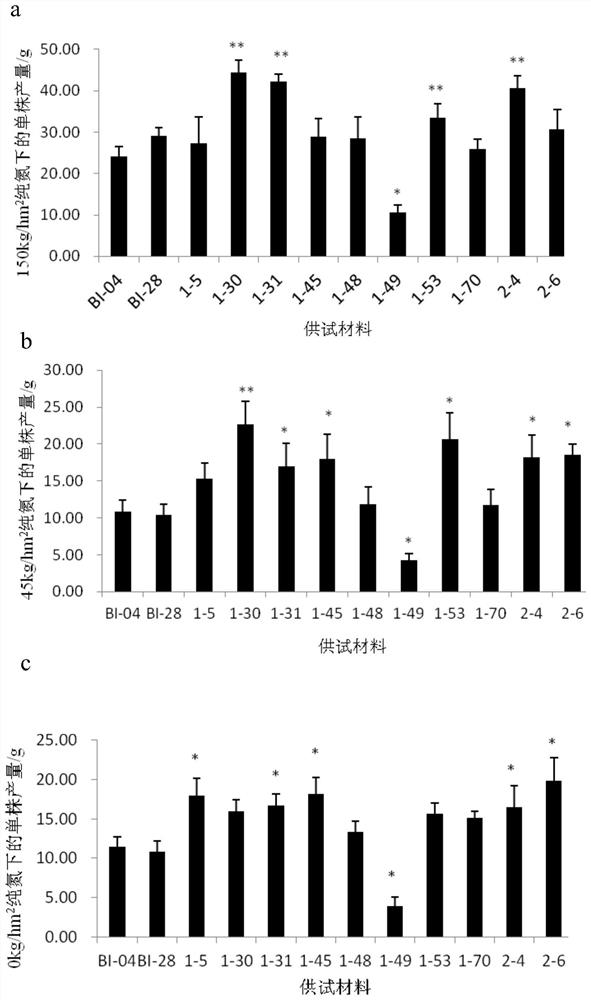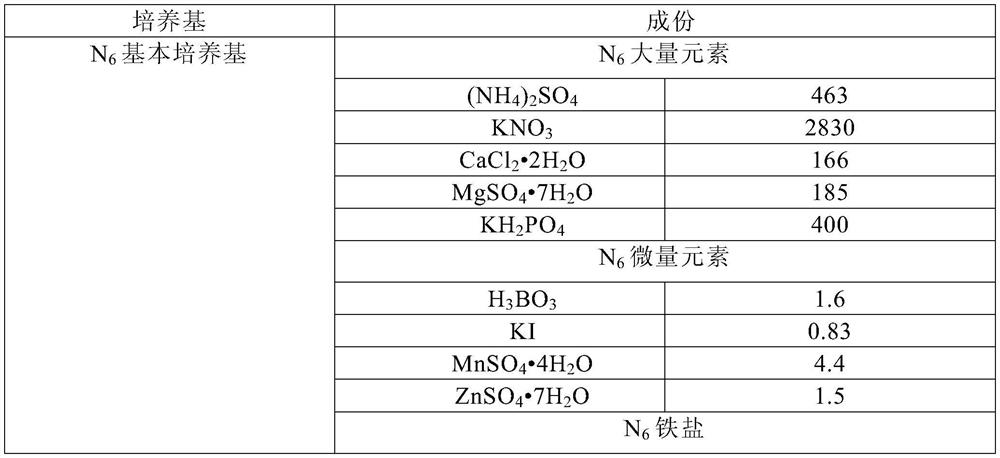Method for rapidly obtaining stable homozygous nitrogen efficient material by using hybrid F1-generation microspore culture
A technology of microspore culture and microspores, applied in the field of agriculture, can solve problems such as long time, and achieve the effect of excellent nitrogen utilization rate
- Summary
- Abstract
- Description
- Claims
- Application Information
AI Technical Summary
Problems solved by technology
Method used
Image
Examples
Embodiment 1
[0056] Example 1: Hybridization of Barley Low Nitrogen Tolerant Parents
[0057] Barley (Hordeum vulgare L.) is the fourth most important cereal crop in the world after wheat, rice and maize. It is considered to be an excellent model plant for studying microspore culture high-frequency regeneration technology and functional food. Take 100 seeds of two barley low-nitrogen-resistant materials BI04 and BI28 (Chen Zhiwei et al. 201030 (1): 158-162) obtained by the laboratory screening in the early stage, disinfect the surface with 10% sodium hypochlorite for 8-10 minutes, rinse with distilled water, Put them on wet gauze and accelerate germination overnight at room temperature in the dark. After 7 days of normal germination, get the seedlings with consistent growth (the seedling length is 5 cm) and transplant them to the field with a spacing of 3 cm and a row spacing of 30 cm. The soil contains 34.0g / kg of organic matter, 2.41g / kg of total nitrogen, and 37.30mg / kg of available nit...
Embodiment 2
[0058] Example 2: F 1 generation plant propagation
[0059] The hybrid seeds are planted in the field during the sowing season as above, and get F 1 Subsequent growth plants are used as culture materials for free microspores.
Embodiment 3
[0060] Example 3: Free F 1 Homozygous DH strain obtained from microspore culture
[0061] Select the spikelets whose microspore development is in the early and middle stages of uninucleate in the middle part of the field from the field, and treat them at a low temperature of 5°C for 2-3 weeks. When inoculating, the spikelets are soaked in 75% alcohol for 30 seconds, sterilized with a saturated bleach solution for 15 minutes, and sterile water Rinse 4 times, connect 10 ears in each test tube, pour into 15ml pre-cooled extract (containing 6% mannitol, 1.1g / L CaCl 2 and 0.976g / LMES), using a high-speed disperser for ultra-speed rotary cutting, 300 mesh screen filter, and the filtrate is 700r min -1 Centrifuge for 5 minutes and repeat 3 times to collect microspores.
[0062] The microspores were pretreated with the pretreatment solution at 25°C in the dark for 2 days. The pretreatment liquid contains 6% mannitol, 1.1g / L CaCl 2 and 0.976g / L MES.
[0063] Before culturing, the ...
PUM
 Login to View More
Login to View More Abstract
Description
Claims
Application Information
 Login to View More
Login to View More - R&D
- Intellectual Property
- Life Sciences
- Materials
- Tech Scout
- Unparalleled Data Quality
- Higher Quality Content
- 60% Fewer Hallucinations
Browse by: Latest US Patents, China's latest patents, Technical Efficacy Thesaurus, Application Domain, Technology Topic, Popular Technical Reports.
© 2025 PatSnap. All rights reserved.Legal|Privacy policy|Modern Slavery Act Transparency Statement|Sitemap|About US| Contact US: help@patsnap.com



